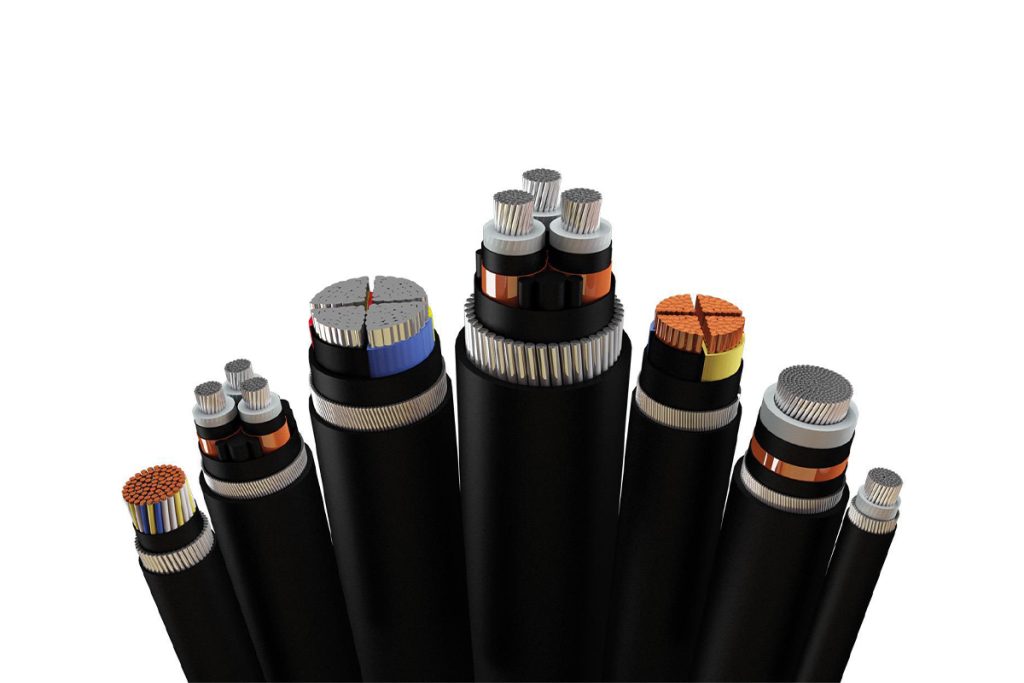Electricity is the lifeblood of modern civilization, and the cables that transmit it are essential for a wide range of applications, from powering household appliances to enabling long-distance electricity transmission. Two primary categories of these cables are high-voltage (HV) cables and low-voltage (LV) cables. Despite their shared purpose of conducting electricity, they differ significantly in terms of structure, materials, applications, and safety considerations. This essay explores these distinctions, providing a comprehensive overview of their design, categorization, and uses.
Structure and Composition
High-Voltage Cables
High-voltage cables are designed to carry electrical currents at voltages above 35 kV (kilovolts). They are used in power transmission and distribution networks, requiring complex structures to handle high electrical stresses and ensure safety.
Conductor: The core is typically made of copper or aluminum, chosen for their excellent conductivity. Conductors may be stranded for flexibility or solid for rigidity.
Insulation: Insulation is critical to prevent electrical leakage. Common materials include cross-linked polyethylene (XLPE), ethylene propylene rubber (EPR), and paper-insulated lead-covered (PILC) compounds. XLPE is favored for its high thermal rating and durability.
Semiconducting Layers: These layers, often made of materials like carbon black, smooth the electric field and reduce stress on the insulation.
Metallic Shield: A metallic shield, usually made of copper tape or wire, surrounds the insulation. It provides a path for fault currents and protects against mechanical damage and electromagnetic interference.
Outer Sheath: The sheath, made of materials like polyethylene (PE) or polyvinyl chloride (PVC), protects the cable from environmental factors such as moisture, chemicals, and physical damage.
Low-Voltage Cables
Low-voltage cables are designed for voltages up to 1 kV and are widely used in residential, commercial, and industrial applications. Their structure is simpler compared to high-voltage cables.
Conductor: Like HV cables, LV cables use copper or aluminum conductors, often stranded for flexibility.
Insulation: Insulation materials include PVC, rubber, or XLPE. PVC is the most common due to its cost-effectiveness, flexibility, and good insulating properties.
Sheath: The outer sheath, typically made of PVC or rubber, provides mechanical and environmental protection.
Categorization
High-Voltage Cables
High-voltage cables are categorized based on their application and construction:
Transmission Cables: Used for long-distance electricity transmission from power plants to substations. They can be overhead, underground, or submarine cables.
Distribution Cables: Carry electricity from substations to end-users, such as homes and businesses. They operate at lower voltages than transmission cables.
Submarine Cables: Designed for underwater applications, such as connecting offshore wind farms to the mainland grid. They are built to withstand harsh underwater conditions.
Low-Voltage Cables
Low-voltage cables are categorized by their specific use cases:
Building Wiring: Used for internal wiring in residential, commercial, and industrial buildings. Examples include twin and earth cables, armored cables, and flexible cables for appliances.
Control Cables: Transmit signals in control systems, often shielded to protect against electromagnetic interference.
Instrumentation Cables: Carry low-voltage signals from sensors and instruments to control systems, ensuring accuracy and reliability.
Applications
High-Voltage Cables
Power Transmission: Essential for transmitting electricity over long distances with minimal losses, connecting power plants to substations.
Renewable Energy: Used to connect renewable energy installations, such as wind and solar farms, to the grid. Submarine cables are critical for offshore wind farms.
Industrial Applications: Provide stable power to heavy machinery in industries like steel manufacturing, mining, and chemical plants.
Low-Voltage Cables
Residential Wiring: Power lighting, outlets, and household appliances.
Commercial and Industrial Buildings: Used for internal wiring, powering equipment, lighting systems, and other electrical devices.
Control Systems: Connect control panels with machinery, sensors, and actuators in automated systems.
Telecommunications: Provide power to communication devices and networks, minimizing signal loss and interference.
Safety Considerations
High-Voltage Cables
Insulation Integrity: Regular inspections are necessary to prevent electrical leaks and short circuits.
Grounding: Proper grounding is essential to provide a path for fault currents and protect equipment.
Protective Gear: Personnel must use specialized gear, such as insulating gloves and boots, when working with HV cables.
Low-Voltage Cables
Overcurrent Protection: Use fuses or circuit breakers to prevent overheating and fires.
Proper Installation: Follow manufacturer guidelines and electrical codes to avoid overloading and physical damage.
Maintenance: Regular inspections help identify wear and tear, ensuring safe operation.
Technological Advancements
High-Voltage Cables
Superconducting Cables: Research into superconducting materials aims to reduce energy losses by enabling zero-resistance electricity conduction.
Advanced Insulation: New materials like nanocomposites improve durability and thermal performance.
Smart Monitoring: Real-time monitoring systems track conditions such as temperature and electrical load, preventing failures and optimizing performance.
Low-Voltage Cables
Flexible Cables: Advances in materials science have led to more flexible and durable cables.
Fire-Resistant Cables: Improved designs enhance fire resistance, increasing safety in buildings.
Sustainable Materials: The use of recyclable materials reduces the environmental impact of cable production and disposal.
Conclusion
High-voltage and low-voltage cables are fundamental to modern electrical systems, each serving distinct but equally vital roles. High-voltage cables are essential for long-distance power transmission and industrial applications, with complex structures ensuring reliability under high electrical stresses. Low-voltage cables, on the other hand, are integral to residential, commercial, and industrial settings, providing power and control in a wide range of applications.
Understanding the differences in their structures, applications, and safety considerations is crucial for designing, installing, and maintaining electrical systems effectively. As technology advances, both high- and low-voltage cables will continue to evolve, becoming more efficient, safe, and environmentally friendly, further supporting the growth of our electrified world.

